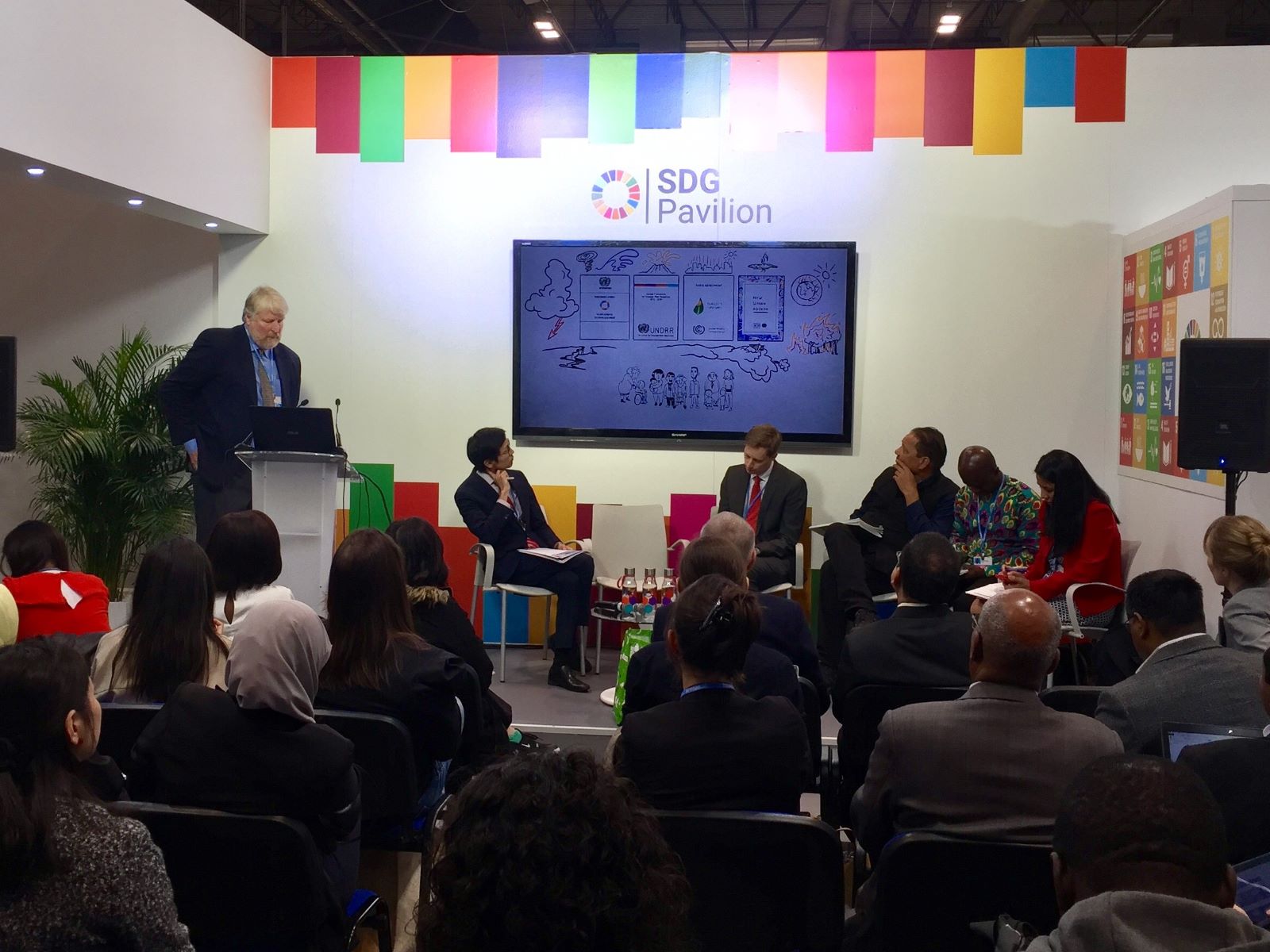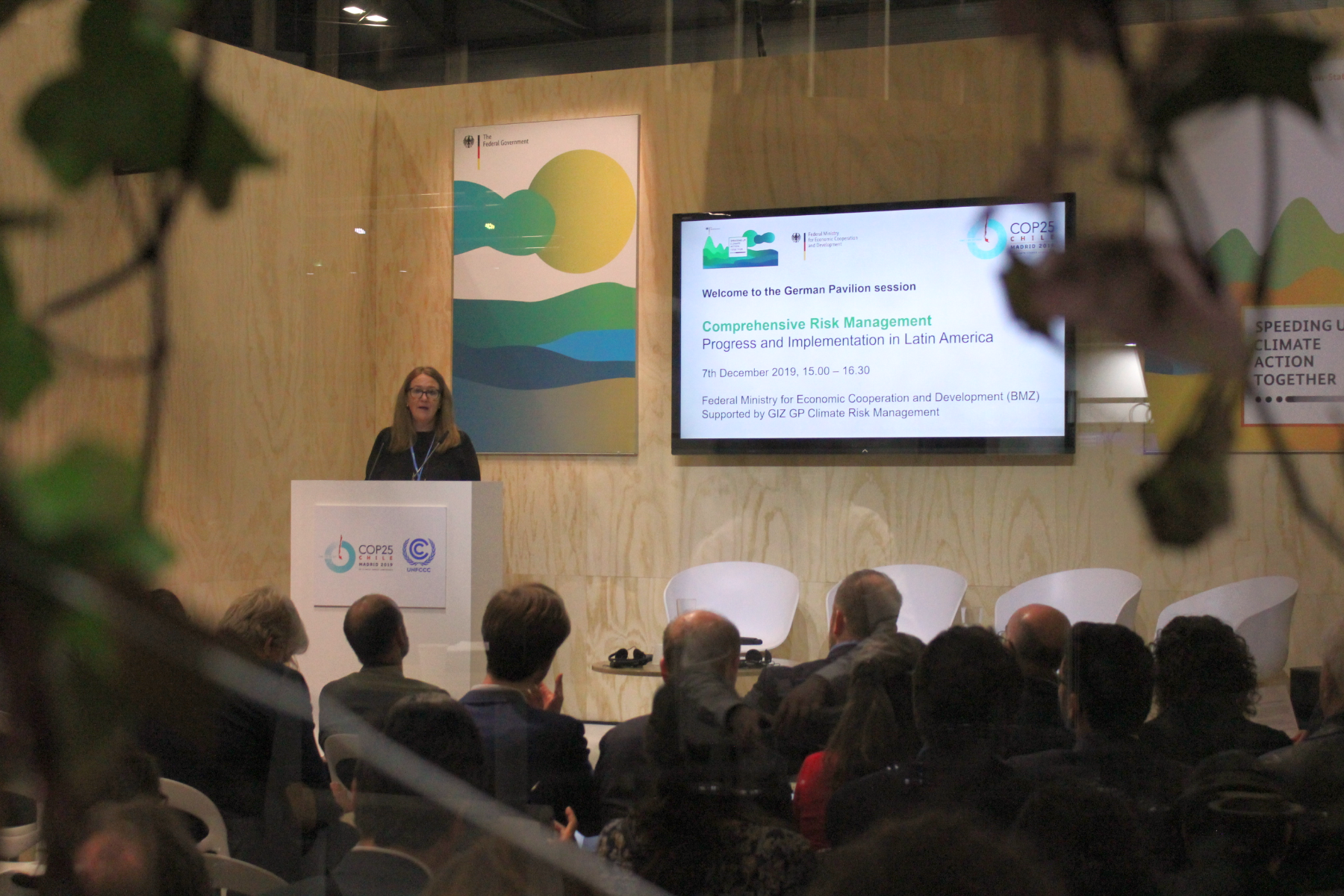Call for Coherence @COP25

2nd until 13th Dec., Madrid – the 25th Climate Change Conference has ended in Madrid and the GIDRM Team is happy to announce that the topic of coherence between global agendas was also echoing through the large halls of the event buildings.
Pavilions of countries, organizations and unions are stretched out over three large halls, each one the size of hangars and these only comprise the blue zone. While events with the word “coherence” or even “disaster risk” in the title are few (read about below), the gist conclusion of so many other events included a call for coherence – in various versions thereof.
Whether it was called “more cooperation”, “better cohesion”, “more multi-stakeholder approaches” or more elaborate “we need to go beyond our silos and work together”; all these exclamations express a call for coherence to ensure sustainable and effective prospects for our future. Many of these were picked up by our team and partners @COP25 and deserve recognition.
Additionally, two events in particular receive mention here, due to their relevance for GIDRM.
Wednesday, 4th Dec. @SDG Pavilion in the Blue Zone
Climate risk informed sustainable development: ensuring coherence of global frameworks
Highlights of the event included a shared focus on the overlap between adaptation strategies and DRR strategies. A representative of the BMZ (Germany’s Federal Ministry for Economic Cooperation and Development) pointed out that the COP25-generated attention can be leveraged for DRR as well, in addition to the fact that both approaches (climate change adaption and DRR) share the goal to reduce risks and increase resilience. Therefore, concerted efforts should be strengthened.
Costs and benefits of (in-)coherence (insights from and title of a new study by UNU-EHS, to be published in 01/2020) differ in time and scale, the BMZ representative continued. While incoherence persists where short-term benefits trump long-term costs, coherence may need to overcome some initial costs in order to deliver sustained benefits.

(Foto © van Hoek/GIZ)
The Environmental Protection Agency in Ghana highlighted their efforts in coordinating adaptation through their Climate Change Data Hub, “a perfect coherence example”, while also crediting that their sector and district budgeting is activity tied, with all activities having to undergo EIA, which greatly contributes to concerted efforts for climate change adaptation and disaster risk reduction.
A representative from Peru highlighted that of their 91 adaptation-focused NDCs, already 25% are also DRR strategies. GNDR presented the GIDRM-supported Cookbook on Coherence and also reminded the full rows of attendees of the event that “on the ground, we don’t care where the money comes from; it’s only at the global level that we are still in silos”. Finally, OECD presented their latest Common Grounds study and its findings, giving us insights into the needs and challenges of coherence.
Saturday, 7th Dec. @German Pavilion in the Blue Zone
Comprehensive Risk Management – Progress and Implementation in Latin America
“We all know climate change is already happening and we can’t close our eyes. We need to work more closely together.” With this strong call for coherence, Ms. Hoven (BMZ) opened the event and delivered her introductory remarks. Thereafter, a new project focused on creating a risk-atlas of Chile, was presented which included coordinated efforts and a comprehensive multi-sectoral risk assessment.

(Foto © Jana Stingl/GIZ)
What is more, a representative from Colombia told GIDRM in a short interview:
In terms of risk management, we are moving to include climate change as a key part of our risk management. The idea is to establish, as a final result that the community, infrastructure, and the entire country is resilient. This includes, for instance, moving climate change and risk management into public investments to guarantee that all contracts must contain key climate and disaster risk criteria.
Key thesis of the panel discussion was:
The only way to build resilience is through comprehensive risk management (CRM).
To sum, the panel agreed with the thesis while each member stressed aspects, most important in their line of work. Those include: gender aspects through a more holistic approach; moving from responders to crisis managers; coherence is essential but not the goal itself – rather the means; and finally, CRM should guide decision making.